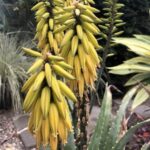Overview
Plant breeding has changed dramatically in the last century. As tools like F1 hybridization, tissue culture, and genetic mapping have become standard in modern horticulture, breeders and growers alike are faced with the question: Are these newer methods better than the traditional ones? Using the petunia as a central example, this article explores the strengths and weaknesses of modern-day breeding methods compared to historical approaches—and considers what this means for the future of all cultivated plants.
What Has Changed?
Traditional Breeding (Pre-1950s)
Traditional plant breeding relied heavily on:
- Open pollination
- Line breeding
- Natural selection
- The use of wild species and landraces
This process was often slow but yielded resilient, genetically diverse varieties. In the case of petunias, early cultivars were charming yet inconsistent—often straggly in growth, limited in color, and variable in bloom size.
Modern Breeding (1950s–Present)
Modern plant breeding uses:
- F1 hybridization
- Marker-assisted selection
- Genomic tools
- Vegetative cloning
- Biotech and tissue culture
The result is a flood of highly uniform, vibrant, and weather-resistant cultivars—especially visible in ornamental annuals like petunias.
Petunias: A Case Study
In the 1950s, F1 hybrid petunias like Comanche and Black Knight revolutionized the market with their improved vigor, uniformity, and bloom density. These hybrids outperformed older open-pollinated varieties by nearly every visual standard. By the 2000s, vegetatively propagated lines such as Supertunia® Vista Bubblegum became household staples.
However, the same traits that make these modern varieties desirable also expose deeper trade-offs—especially for small breeders and those concerned with genetic sustainability.
Pros & Cons of Modern Methods
Advantages of Modern Breeding
| Feature | Benefit |
|---|---|
| Uniformity | Predictable growth and performance across an entire crop |
| Hybrid Vigor (Heterosis) | Stronger root systems, increased bloom counts, improved disease resistance |
| Expanded Trait Selection | Introduction of novel flower colors, shapes, and growth forms |
| Weather Resilience | Tolerance to heat, wind, rain, and temperature swings |
| Consumer Appeal | Compact habits, self-cleaning blooms, long flowering season |
| Propagation Efficiency | Vegetative cloning ensures exact replicas of elite genetics |
Modern methods allow breeders to meet the demands of the commercial market, where uniformity, aesthetic appeal, and shelf-stable performance are key.
Disadvantages of Modern Breeding
| Issue | Description |
|---|---|
| Genetic Narrowing | Heavy inbreeding of elite lines reduces the genetic pool |
| Seed Sterility | Many modern varieties are sterile or do not come true from seed |
| Loss of Traditional Varieties | Older cultivars are often discarded despite unique traits |
| Dependence on Corporations | Patented genetics limit independent breeders and seed saving |
| Reduced Adaptability | Uniform lines may lack the resilience of more genetically diverse ones |
When all energy is directed at optimizing specific traits, other valuable characteristics—such as pest resistance, regional adaptability, or fragrance—are often overlooked.
Broader Implications for All Plants
While this article focuses on petunias, the implications apply broadly to:
- Vegetables (e.g., modern hybrid tomatoes vs. heirlooms)
- Perennials (e.g., clonal cultivars vs. seed-grown lines)
- Fruit trees (e.g., grafted clones vs. seedling diversity)
- Native plants (e.g., wild ecotypes vs. nursery strains)
Across all types, the breeding method chosen will shape not only performance in the field but also the long-term availability of genetic diversity.
Finding the Balance: Modern Performance with Heritage Resilience
Modern methods are not inherently bad. In fact, when used wisely, they offer extraordinary advantages. But the loss of traditional varieties and wild relatives would be a mistake with lasting consequences.
The ideal future lies in balance:
- Preserving heirlooms, landraces, and wild species as sources of diversity
- Using modern tools to selectively enhance key traits
- Maintaining ethical breeding practices that allow continued access and innovation for small growers and individuals
For breeders, gardeners, and growers, this means being intentional: choosing when to leverage modern power, and when to preserve the value of the past.
Final Thoughts
At Gen1 Greenhouse, we believe that excellence and integrity can coexist in horticulture. Our petunia breeding projects—and all our plant offerings—strive to combine modern performance with long-term stewardship. Whether you grow for color, profit, pollinators, or posterity, the best plants are those that thrive today without compromising tomorrow.







Pingback: Nacogdoches-Native Petunia – Experimental Breeding in East Texas - Gen1 Greenhouse